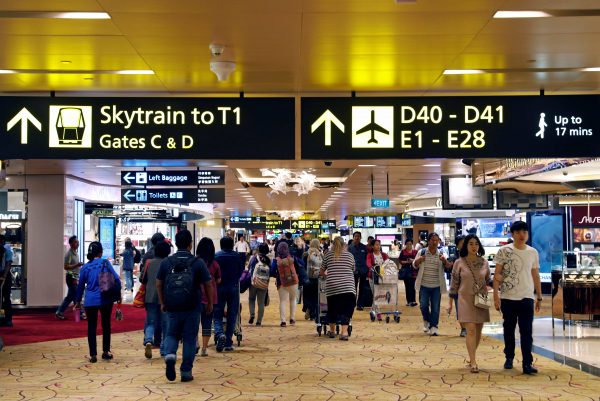The 350-kilometre KLSG-HR set out to revolutionise transport between the two capitals — one of the world’s busiest air-routes. The rail-link’s direct route, predicted speed of 250 kilometres per hour, and streamlined customs and immigration formalities would have entailed 90 minutes of travel time with customers disembarking in centrally located stations. The current total travel time is five hours by air including city transit to and from airports.
By making return day trips feasible for Greater Kuala Lumpur’s 8 million and Singapore’s 5.5 million residents, the KLSG-HSR was expected to bring efficiency gains, boost demand for cross-border trips up to six-fold and generate demand for a wide range of urban-based services. Beyond the cross-border link, the HSR was to include a domestic service linking Kuala Lumpur with a range of smaller cities.
Economists from IDE-JETRO estimated annual benefits of US$1.6 billion and US$640 million for Malaysia and Singapore, respectively. Malaysia would reap additional benefits from the local service, which would develop smaller urban centres and allow its residents to commute to larger cities. The institute also expected the rail link would speed up the transition of Malaysia’s economy from manufacturing to services.
The KLSG-HSR was never going to be cheap, with estimates of approximately S$20–25 billion (US$15.1–18.8 billion) for its construction — excluding land acquisition. But the cost of the rolling stock, signalling, and other equipment would have been borne by the operator, who would have had to acquire finance and recoup the costs over time. Despite the formidable financial requirements, requests for interest showed Japanese, South Korean, Chinese, and European rail players were keen to bid.
Momentum was stalled by Malaysia’s 2018 elections. That year, Najib Razak’s administration was toppled by the Pakatan Harapan coalition headed by Mahathir Mohamad. Inheriting a constrained budget and a bevy of ongoing mega-projects — many linked to the Belt and Road Initiative — the new coalition requested to delay the project. Following discussions in September, project kick-off was delayed by 18 months until May 2020, the target date for completion moved back to 2031, and Singapore was compensated S$15 million (US$11 million) for incurred costs.
Following Malaysia’s political transition in March 2020, the new Perikatan Nasional administration requested a second and final delay until December 31. The rationale given was that Malaysia needed to focus on curbing the COVID-19 pandemic and would like to explore ways of reducing project costs. In the weeks running up to the deadline, there were rumours that Malaysia was looking at different permutations of the HSR, including having the line end in Johor Bahru, or removing the third-party service operator. Upon the lapsing of the deadline on December 31, both the Malaysian and Singaporean governments announced the project’s cancellation.
While this decision is a clear set-back to greater connectivity, it is unlikely to derail bilateral relations. Singapore and Malaysia’s proximity, shared history and deep cross-border linkages are mirrored by their economic interdependence. Each is the other country’s second-most important trading partner, a position which has remained largely unchanged over the past 40 years.
While Malaysia and Singapore exchange a wide variety of commodities, more than half of trade consists of intermediate goods. This includes integrated circuits and electrical components, refined petroleum and related by-products, and chemical goods and polymers. The two countries are deeply integrated into regional and global networks, with legions of multi-national corporations and local firms dependent on the uninterrupted movement of components and inputs between production sites in each other’s territory.
In addition, Malaysia is an important supplier of food products to Singapore. According to the Singapore Food Agency, Malaysia accounted for 72 per cent, 37 per cent and 15 per cent of the city-state’s egg, chicken, and fish supplies in 2019. Conversely, about 1 million Malaysians live in Singapore on a variety of visas, with an estimated 100,000 normally commuting into the city-state from neighbouring Johor.
Despite negligible cross-border movements at present due to COVID-19, both countries are proceeding with the Rapid Transit System (RTS), a 4 kilometre link between Singapore and downtown Johor Bahru. Construction has just kicked off and will link to public transport systems on each side of the border. When operational, the RTS is expected to move some 10,000 persons per hour each way. Beyond lessening the commute time, the link will significantly reduce pressure on the frequently congested Causeway, the main land connection between the two countries.
While the two countries are aware of each other’s importance, there may still be hiccups in the months ahead. The Singaporean government has stated it will seek compensation for costs incurred relating to the KLSG-HSR, which could rise to S$270 million (US$204 million). While Malaysia has agreed to this in principle, there are different estimates as to what the final amount will be. Given the difficult economic circumstances facing the Malaysian government, which has just placed swathes of the country under a lockdown, it cannot afford to be seen to be going easy in the negotiations.
Francis E Hutchinson is Senior Fellow and Coordinator of the Malaysia Studies Programme at the ISEAS-Yusof Ishak Institute, Singapore.

